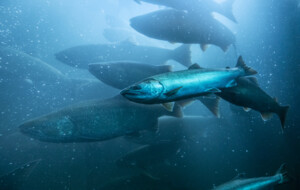Agriculture & Aquaculture

We’re redefining the future of agriculture and aquaculture with cutting-edge solutions tailored to meet the industry's most pressing challenges. Our commitment to sustainability, efficiency and resource management is unwavering, ensuring our customers succeed in today's demanding environment.
Agriculture Solutions
Agriculture is essential to global food security, facing the dual challenges of water scarcity and the need for high productivity on limited arable land. SPX FLOW’s advanced fluid handling and mixing systems empower farmers to overcome these challenges:
- Efficient Fluid Handling: Our systems deliver precise irrigation and nutrient distribution, ensuring crops receive exactly what they need, minimizing waste and conserving water
- Advanced Mixing Technologies: We provide innovative mixers that enhance the formulation of fertilizers and pesticides, which promotes soil health and supports sustainable plant growth.
- Greenhouse Climate Control: With specialized pumping solutions, we optimize temperature and humidity within greenhouses, enabling consistent, year-round crop production regardless of external conditions.
Through these solutions, SPX FLOW is helping farmers achieve more with fewer resources, paving the way for a prosperous, sustainable agricultural future.
Aquaculture Solutions

As the global demand for seafood continues to rise, the aquaculture industry must balance increased production with the health of aquatic ecosystems. SPX FLOW’s state-of-the-art heat transfer solutions play a crucial role in maintaining optimal water temperatures, essential for fish health and growth. Our fluid handling systems facilitate efficient water circulation and aeration, vital for preserving water quality and reducing the environmental footprint of aquaculture operations. By integrating these advanced technologies, SPX FLOW helps aquaculture producers achieve higher efficiency and sustainability, contributing to responsible and sustainable seafood production. Read our blog on the Benefits of Plate Heat Exchangers for Fish Farmers.
Proven Expertise and Client Success
Our commitment to innovation is reflected in the numerous testimonials from satisfied clients who have experienced the transformative impact of SPX FLOW's solutions. Farmers and aquaculture operators alike praise our ability to deliver customized, seamless solutions that not only meet but exceed their expectations. By integrating SPX FLOW technologies into existing systems, clients experience minimal disruption and maximum benefits, driving industry-wide advancements in sustainability and efficiency
Partnering for a Sustainable Future
At SPX FLOW, we are more than just a provider of technological solutions; we are dedicated partners in progress for the agriculture and aquaculture industries. Our focus on sustainability, efficiency and resource management equips our clients to confidently meet current challenges and future demands. By choosing SPX FLOW, industry leaders can embark on a journey toward a more sustainable and productive future.
Explore our innovative solutions and discover how SPX FLOW can help you achieve unparalleled success in agriculture and aquaculture. Together, we can cultivate a brighter, more sustainable tomorrow.
